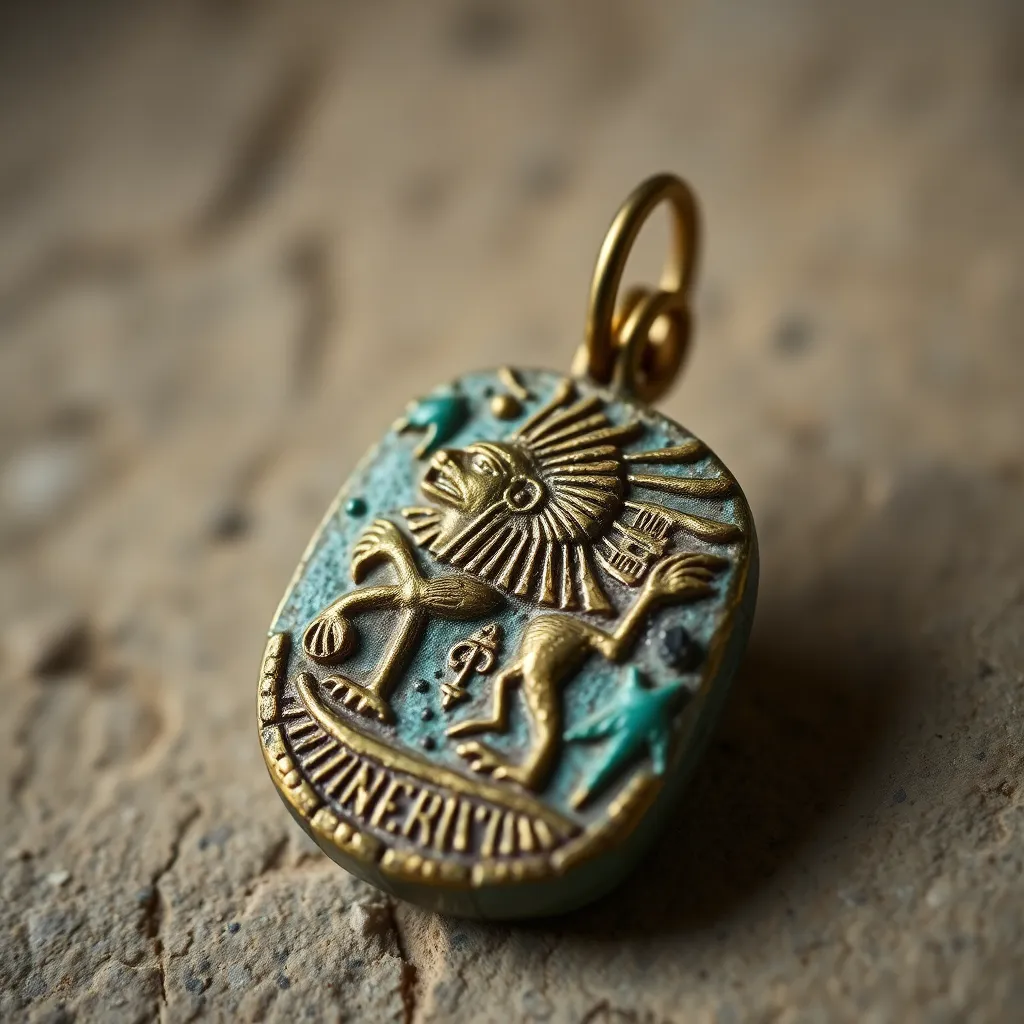Ancient Egyptian Amulets: A Window into Spiritual Beliefs
I. Introduction
In ancient Egypt, amulets were small objects believed to possess magical properties, offering protection, health, and luck to their wearers. These items played a significant role in both spiritual and daily life, reflecting the deep-seated beliefs of the ancient Egyptians about the divine and the afterlife. This article will explore the various aspects of amulets, including their historical context, types and symbolism, roles in daily life, and their significance in the afterlife, as well as their continued influence in modern times.
II. Historical Context of Ancient Egyptian Amulets
Amulets have a long history in ancient Egypt, dating back to the Pre-Dynastic period (c. 5000-3100 BCE). Over the centuries, their use evolved and expanded significantly.
- Timeline of amulet use:
- Pre-Dynastic Period: Early examples made from natural materials.
- Old Kingdom (c. 2686-2181 BCE): Increased use of faience and stone for intricate designs.
- Middle Kingdom (c. 2055-1650 BCE): More personalized and varied amulet forms.
- New Kingdom (c. 1550-1070 BCE): Amulets became standard in burial practices.
- Cultural significance: Throughout various dynasties, amulets represented the beliefs and values of the time, often reflecting the prevailing religious practices.
- Evolution of materials: As technology advanced, so too did the craftsmanship of amulets, transitioning from simple forms to elaborate creations using gold, silver, and glass.
III. Types of Amulets and Their Symbolism
Ancient Egyptian amulets came in a variety of shapes and forms, each with its own unique symbolism:
- Scarabs: Symbolizing rebirth and regeneration, scarabs were often placed in tombs to ensure the deceased’s safe passage into the afterlife.
- Ankhs: Representing eternal life, the ankh was a popular amulet worn by both the living and the dead.
- Eye of Horus: A symbol of protection and healing, this amulet was believed to ward off evil and bring safety.
These amulets were frequently connected to deities and spiritual practices, with many designs inspired by the gods and their attributes, linking the wearer to divine protection.
IV. The Role of Amulets in Daily Life
Amulets were not only significant in spiritual practices but also played a crucial role in the daily lives of ancient Egyptians:
- Protection and well-being: Many Egyptians wore amulets to protect themselves from misfortune and illness, believing they would bring health and safety.
- Status symbols: The materials and designs of amulets often indicated social status, with wealthier individuals opting for more ornate and expensive pieces.
- Ritualistic practices: Amulets were integrated into daily rituals, often used in conjunction with prayers and offerings to deities.
V. Amulets in the Afterlife: Beliefs and Practices
In ancient Egyptian beliefs, the afterlife was of paramount importance, and amulets played a critical role in burial practices:
- Significance in burial: Amulets were placed within tombs, intended to provide protection and assistance to the deceased in their journey through the afterlife.
- Common amulets: Items such as the scarab, ankh, and the Eye of Horus were frequently found among grave goods.
- Journey through the afterlife: Amulets were believed to help the deceased navigate the challenges faced in the afterlife, ensuring a safe passage to the realm of the dead.
VI. Archaeological Discoveries and Modern Interpretations
Archaeological findings have uncovered a wealth of information about ancient Egyptian amulets:
- Notable discoveries: Excavations in famous sites like the Valley of the Kings have yielded numerous amulets, providing insights into their usage and significance.
- Modern studies: Researchers continue to analyze these artifacts, shedding light on the beliefs and practices surrounding amulets.
- Understanding spirituality: The study of amulets helps modern scholars understand the spiritual framework of ancient Egyptian society.
VII. Continued Influence of Ancient Egyptian Amulets
The fascination with ancient Egyptian amulets continues in contemporary culture:
- Revival of interest: Modern spirituality often embraces the symbolism of ancient amulets, incorporating them into personal practices for protection and healing.
- Modern replicas: Many artisans create replicas of ancient amulets, which are popular in the realms of fashion and spirituality.
- Lasting legacy: The beliefs associated with amulets endure, influencing modern interpretations of spirituality and personal empowerment.
VIII. Conclusion
In summary, ancient Egyptian amulets serve as a fascinating window into the spiritual beliefs and practices of this remarkable civilization. From their historical context to their role in daily life and the afterlife, these artifacts provide invaluable insights into how the ancient Egyptians viewed the world around them. Understanding the significance of amulets not only enriches our knowledge of ancient cultures but also encourages further exploration into the myriad beliefs that have shaped human history.




